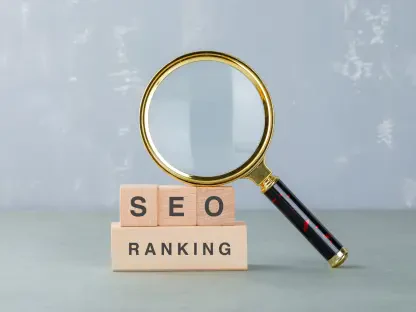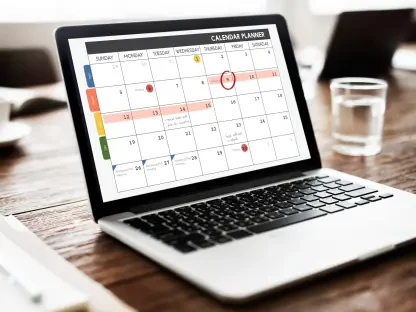As we dive into the world of digital marketing, I’m thrilled to sit down with Anastasia Braitsik, a global leader in SEO, content marketing, and data analytics. With her extensive expertise in navigating the complexities of paid search advertising, particularly on Google Ads, Anastasia has become a trusted voice for small and medium-sized businesses looking to make their mark online. Today, we’ll explore the unique challenges these businesses face in a competitive landscape, strategies to outsmart rather than outspend larger brands, and actionable insights to maximize success on platforms like Google Ads. From rising costs to the importance of quality traffic, Anastasia shares her wisdom on leveling the playing field.
What do you see as the biggest hurdles for small businesses trying to compete on Google Ads in today’s market?
I think the most significant hurdles come down to budget constraints and the sheer scale of competition. Rising costs, like higher Cost-Per-Click rates, hit small businesses hardest because their budgets don’t stretch as far as they used to. Unlike larger brands that can absorb these increases or even ramp up their spend, small businesses often miss out on clicks and potential customers simply because they can’t keep up financially. It’s not just about money, though—there’s also a knowledge gap. Many small businesses lack the in-house expertise or resources to optimize campaigns effectively, which puts them at a disadvantage against bigger players with dedicated teams.
How does the issue of limited data impact small businesses using Google Ads features like automated bidding or Responsive Search Ads?
Limited data is a real roadblock for small businesses. Features like automated bid strategies and Responsive Search Ads rely heavily on having enough data to learn and optimize over time. When you’re working with a smaller budget, you naturally generate less traffic and fewer conversions, which means the system takes much longer to figure out what works. This extended learning period can be frustrating, especially for businesses that need quick results to justify their ad spend. Larger brands with bigger budgets can feed the system data faster and see results sooner, while small businesses are stuck playing the waiting game.
What practical steps can small businesses take to navigate these longer learning periods when their data volumes are low?
Patience is key, but so is strategy. Small businesses can start by focusing on very specific, high-intent keywords to ensure the limited data they do generate is as relevant as possible. They should also consider running smaller, tightly controlled campaigns to test and gather insights before scaling up. Another tip is to leverage manual bidding initially, rather than jumping straight into automated strategies, so they have more control over where their budget goes while the system learns. Lastly, integrating any existing customer data—like email lists—into their campaigns can help provide a head start for targeting and optimization.
How critical is account management for small businesses trying to succeed on Google Ads?
It’s absolutely critical. Google Ads is a complex platform, and effective account management—whether it’s choosing the right bid strategy, refining keywords, or structuring campaigns—can make or break a small business’s success. Without someone who understands the nuances, it’s easy to waste money on irrelevant clicks or miss opportunities to improve performance. Larger brands often have entire teams or agencies handling this, but small businesses might not have that luxury, which means they’re either learning on the fly or not fully utilizing the platform’s potential.
What are some common pitfalls small businesses encounter when managing their Google Ads accounts without expert help?
One of the biggest pitfalls is poor keyword selection—either going too broad and attracting irrelevant traffic or not using negative keywords to filter out bad clicks. Another issue is neglecting ad copy and landing pages; even if you get clicks, if the messaging doesn’t align with what the user expects, you lose the conversion. I also see a lot of small businesses ignoring conversion tracking, which means they have no idea what’s working or where their money is going. These mistakes add up quickly and can drain a limited budget without delivering results.
Why does brand awareness give larger companies such an advantage in Google Ads performance?
Brand awareness is a massive factor because people naturally gravitate toward names they recognize. When a user sees an ad from a well-known brand, they’re more likely to click and convert because there’s an inherent level of trust and familiarity. Larger companies often have years of marketing behind them, which boosts their click-through rates and conversion rates. Small businesses, on the other hand, are starting from scratch in many cases, so they have to work harder to build that credibility and convince users to choose them over a household name.
What can small businesses do to build trust and visibility with their audience over time on Google Ads?
Building trust starts with consistency and authenticity. Small businesses should focus on creating compelling, relevant ad copy that speaks directly to their audience’s needs and reflects their unique value. Using ad extensions—like reviews or location information—can also help establish credibility. Beyond ads, they should invest in a strong online presence, like a professional website and active social media profiles, to reinforce their brand. Over time, retargeting campaigns can keep their name in front of potential customers, slowly building familiarity even with a smaller budget.
The idea of ‘outsmarting, not outspending’ comes up a lot for small businesses. What does this concept mean to you in the context of Google Ads?
To me, it’s about working smarter with the resources you have. Outsmarting means focusing on strategy over brute force spending. For example, a small business can carve out a niche by targeting very specific, long-tail keywords that larger competitors might overlook, driving highly relevant traffic at a lower cost. It’s also about leveraging free or low-cost tools within Google Ads, like Asset Studio for creating visuals, to make ads stand out without a big production budget. The goal is to find creative ways to compete by understanding your audience better than anyone else.
Why is prioritizing quality traffic over quantity so important for small businesses running Google Ads campaigns?
Quality traffic is everything, especially when budgets are tight. Getting thousands of clicks means nothing if those users aren’t interested in your product or service. For small businesses, every dollar counts, so driving the right people—those who are likely to convert—to their site is far more valuable than casting a wide net. By focusing on a smaller, more relevant audience, they can improve conversion rates and get a better return on investment, which is often the difference between a campaign succeeding or failing.
What’s your advice for small businesses on identifying and targeting that smaller, more relevant audience?
Start by really understanding who your ideal customer is—dig into their demographics, interests, and pain points. Use tools like Google’s Keyword Planner to find specific, high-intent keywords that match what they’re searching for. Narrow your targeting by location, device, or even time of day if your business has a specific audience profile. Also, look at your website analytics to see who’s already engaging with you and build lookalike audiences or retargeting campaigns based on that data. The more precise you are, the better your results will be.
How important is conversion tracking for small businesses, and how can it shape their Google Ads strategy?
Conversion tracking is non-negotiable. Without it, you’re flying blind—you can’t tell which keywords, ads, or campaigns are driving real value. For small businesses, where every penny matters, understanding what works allows you to optimize and put your budget where it counts. It shapes strategy by highlighting opportunities to double down on high-performing areas and cut waste on underperforming ones. Setting it up properly, whether it’s tracking form submissions, purchases, or calls, gives you the insights needed to make data-driven decisions.
What’s your forecast for the future of Google Ads for small businesses over the next few years?
I think Google Ads will continue to evolve with more automation and AI-driven tools, which could be both a challenge and an opportunity for small businesses. On one hand, these tools might require even more data to work effectively, potentially widening the gap with larger brands. On the other, as features like Asset Studio and simplified campaign setups become more accessible, small businesses could find new ways to compete without needing deep technical expertise. I expect costs to keep rising, so the focus on outsmarting—through hyper-targeted strategies and creative approaches—will be more important than ever.









